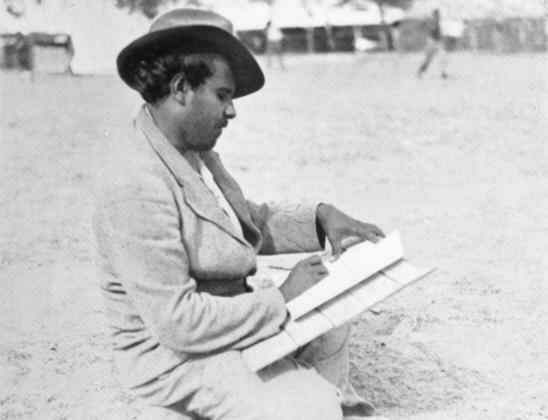WALTER EBATARINJA
MARKET ANALYSIS

Walter Ebaterinja's paintings first appeared at auction in 1969, the year after his death. It was a measure of the affection owners felt toward his paintings that by 1984, 15 years later, only twenty five paintings had appeared for sale on the secodary market with the higheast result being $425, a quite considerable amount at the time. As his works sold from the Hermannsburg mission during his lifetime for $5 to $20 this was a remarkable increase in value.
By 1995, when Sotheby's held its first specialist Aboriginal art auction in Australia more than 200 works had been offered for sale with his record price being the $900 set by Lawsons in April 1993. Walter's success at public sale is quite remarkable though the average price of his works is very low at $699. His low average price is acountable to the length of time since his death and his works first appearance in Australian auctions. If his early sales pre-1995 are discarded, the average prices of his sales jumps dramatically. (Walter's AIAM100 rating accounts for this, as the rule that discounts an artist's ranking if their average prices fall below $1500 applies. Were this factor not taken into account, Walter's position amongst the most important artists of the movement would be significantly higher).
His current record price was set at Sotheby's in July 2007, when a lovely 39 x 57 cm image of Alice Springs as seen from Anzac Hill sold for $10,800. Another smaller image painted of the same scene from the same location sold in 2012 for $9,600 relegating an image entitled Aranda Landdscape that sold for $4,800 two years earlier to third place. Only 10 works have sold for more than $2,000 and 45 over $1000. That leaves no over 300 paintings which have either failed to sell or have achieved a price under $1000. All of Walter's sales over $1000 have been made post-2003. The reason? In 2002 the National Gallery of Australia staged its major retrospective Hermannsburg painting exhibition,Seeing the Centre, curated by Alison French. At the time of the exhibition Hermannsburg works were considered a rather kitch anomoly in the history of Aboriginal desert art, having been transcended by the sheer volume of traditional desert dot paintings created post-1970. Subsquently, works by Albert Namatjira, and indeed all of the leading Hermannsburg watercolourists underwent a reappraisal and this has resulted in steadily increasing prices.
© Adrian Newstead

